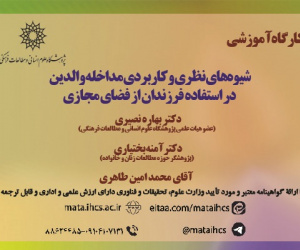روسپی گری زنان در شهر تهران از عهد قاجار تا پایان دوره پهلوی (مقاله علمی وزارت علوم)
درجه علمی: نشریه علمی (وزارت علوم)
آرشیو
چکیده
مقاله پیشِ رو با تمرکز بر روسپی گری زنان در شهر تهران درصدد پاسخ به دو سؤال زیر است: ۱-وضعیت زنان روسپی در بازه زمانی دوره قاجار تا پایان دوره پهلوی چگونه بوده است؟ ۲-مواجهه حکومت با آن ها در این دوران چگونه بود؟ بررسی تغییرات کمی و کیفی وضعیت زنان روسپی و نوع مواجهه حکومت با معضل روسپی گری در دوره قاجار و پهلوی با استفاده از روش تطبیقی انجام شده است؛ یافته های پژوهش نشان می دهد که روسپیان در این دو دوره با توجه به خاستگاه اجتماعی، سن و علل روسپی گری وضعیت مشابهی داشت اند، اما با توجه به مدرنیزاسیون جامعه در دوره پهلوی روسپی گری به صورت پدیده ای بیشتر شهری، ساختارمند، متنوع تر و از نظر کمی با درصد کمتری بروز یافته است. سیاست حکومت ها در مواجهه با این پدیده نیز چندگانه و متناقض بوده است؛ علی رغم مشابهت در استفاده های مالی و سیاسی حکومت ها از روسپیان و مجازات های کیفری آنان، در دوره رضاشاه تلاش هایی برای کنترل و ساماندهی این پدیده از طریق اسکان روسپیان و اعمال قوانین بهداشتی صورت گرفت و در دوره محمدرضاشاه رویکرد به روسپی گری به تدریج از برخورد کیفری تا حدی به برخورد اجتماعی تغییر یافت و اقداماتی برای حمایت از زنان روسپی و بازگشت آن ها به جامعه انجام شد. به رغم تلاش های صورت گرفته، حکومت ها در کنترل و پیشگیری این معضل توفیق چندانی نداشته و عوامل کلان ساختاری و نگرش های پدرسالارانه و مردسالارانه در جامعه نقش مهمی در تداوم روسپی گری داشته اند.Prostitution of Women in Tehran from The Qajar Era to The End of The Pahlavi Period
This article focuses on the prostitution of women in Tehran and aims to answer two questions: 1) What was the status of female prostitutes from the Qajar period to the end of the Pahlavi era? 2) How did the government address this issue during these periods? The study employs a comparative method to examine the quantitative and qualitative changes in the status of female prostitutes and the government's approach to the problem of prostitution during the Qajar and Pahlavi periods (Reza Shah and Mohammad Reza Shah). The findings indicate that prostitutes during these periods had similar conditions based on their social background, age, and reasons for prostitution. However, with the modernization of society during the Pahlavi era, prostitution became more urban, structured, diverse, and quantitatively less prevalent. The government's policies in dealing with this phenomenon were also multifaceted and contradictory. Despite the financial and political exploitation of prostitutes and their criminal punishments, efforts were made during Reza Shah's reign to control and organize this phenomenon through the settlement of prostitutes and the implementation of health regulations. During Mohammad Reza Shah's reign, the approach to prostitution gradually shifted from criminal to somewhat social, with measures taken to support prostitutes and reintegrate them into society. Despite these efforts, the governments were not very successful in controlling and preventing this problem, and macro-structural factors and patriarchal and male-dominated attitudes in society played a significant role in the persistence of prostitution.











